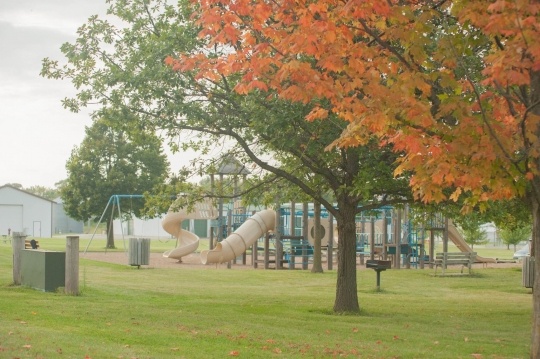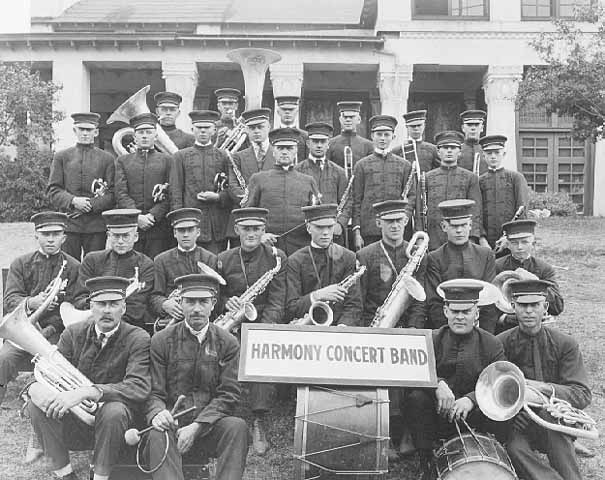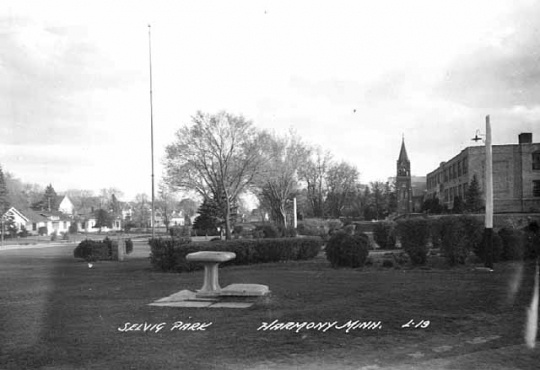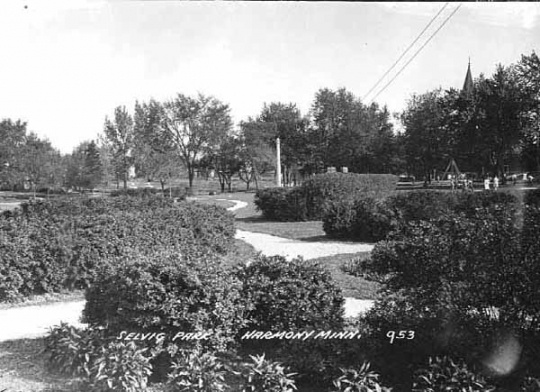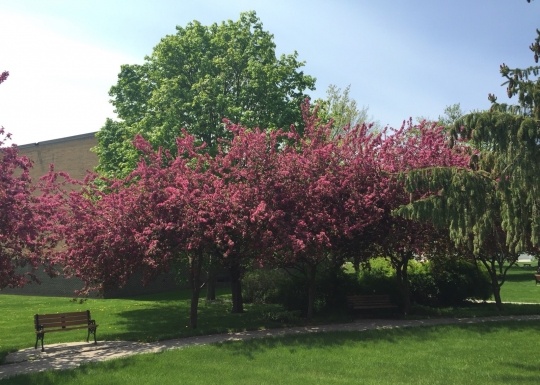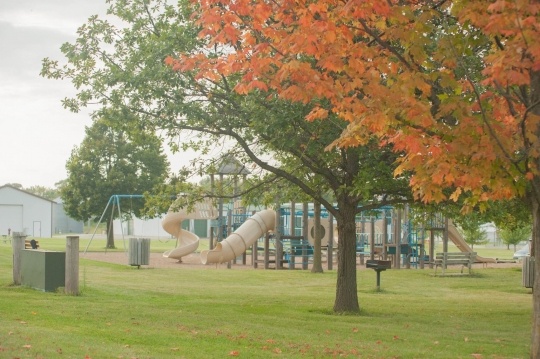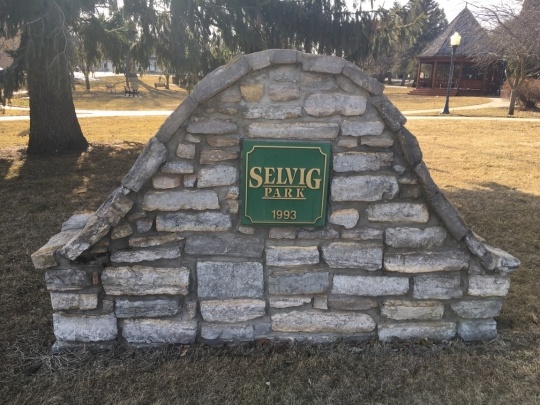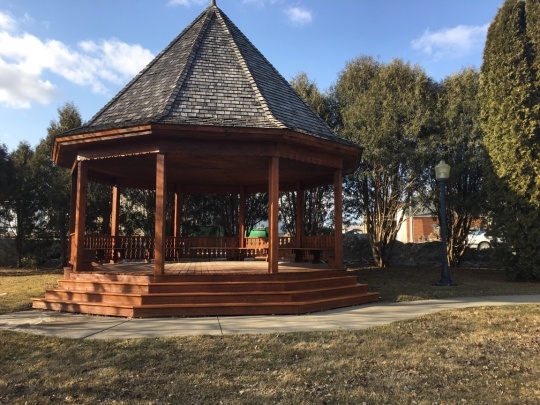In 1923, the City of Harmony created a central park amid a national urban planning movement focused on adding outdoor spaces to cities. The park quickly became a venue for a variety of summer events as well as a community gathering spot.
The Harmony Women’s Club was an early proponent of a city park. An inviting green space, members contended, would provide a location for community socializing. At the urging of the club, the City of Harmony purchased a cow pasture from local farmer A. G. Johnson. The few acres of land sat at the southern edge of the town’s business district. After the purchase, the women’s club took over, raising money for the beautification of the parkland.
Fundraising efforts included hosting teas, dinners, food and bake sales, and theatre performances, including the operetta “Feast of the Red Corn” in the fall of 1923 and the play “A Prairie Rose” in 1924. By 1928, enough money had been raised to purchase a pair of white pillars, complete with electric lights, for the two park entrances. The club also purchased a fountain and a flagpole and raised funds for gravel pathways, flowers, trees, and shrubs.
Shortly after the park’s creation, the Harmony Concert Band, founded in 1884, started performing outdoor concerts. Before the creation of the park, the band had performed at different locations throughout town during the summer months, even setting up instruments on the railroad depot platform. Eventually the band gave concerts in a band shell erected at the park.
Every summer during the 1920s and 1930s, Harmony was a stop for the Chautauqua Circuit, a traveling entertainment troupe based out of New York. The Chautauqua Circuit stayed in town for an entire week. With its arrival, a white-and-red-striped circus tent was set up at the park. The Chautauqua members performed philosophical and political speeches, musical concerts, and plays, both dramatic and comedic. A talent show, starring local residents and presented on the final night, was a highlight. Harmony’s Truman Quammen performed for several summers with the Chautauqua Circuit. Quammen studied at the MacPhail School of Music in Minneapolis before returning to Harmony and directing the Greenfield Lutheran Church Choir.
When a new brick high school was built on the south side of the park in 1935, it lost some of its acreage. The site, however, continued to host community events year-round, from high school students’ afternoon picnics to Fourth of July celebrations. On Memorial Day, a dozen young girls dressed in white dresses laid wreaths on white crosses in remembrance of the city’s Civil War and World War I veterans.
An expansive 1962 addition on the high school’s north side further diminished the park, making it a shadow of its former self. In order to prepare for a large 1976 July Fourth Bicentennial Celebration, efforts were made to revitalize the park. A parks and recreation board created in 1975 joined forces with several local organizations, raising funds to purchase and plant new flowers, plants, and trees.
The 1990s brought several park improvements. In 1990, the Harmony Lions Club used funds from its annual Fourth of July bratwurst stand to build new bathrooms. In 1992, the city received a generous donation for park renovations from Eleanor Selvig Thorne, daughter of Dr. Carlus Selvig. Dr. Selvig had served on the Harmony School Board from 1910 to 1945; he had also been the town’s mayor for nine years and its dentist until 1956. In recognition of the $10,000 donation, the park was officially named after Dr. Selvig. A gazebo was built and new playground equipment installed. Funds were also spent on a concrete walkway, various greenery, and construction of a rental shelter.
Selvig Park remains a centerpiece of Harmony’s community events, and efforts continue towards its maintenance and preservation. In May 2013, funds provided by the Harmony Area Community Foundation and the Southern Minnesota Initiative Foundation supported the purchase and installation of new playground equipment.










